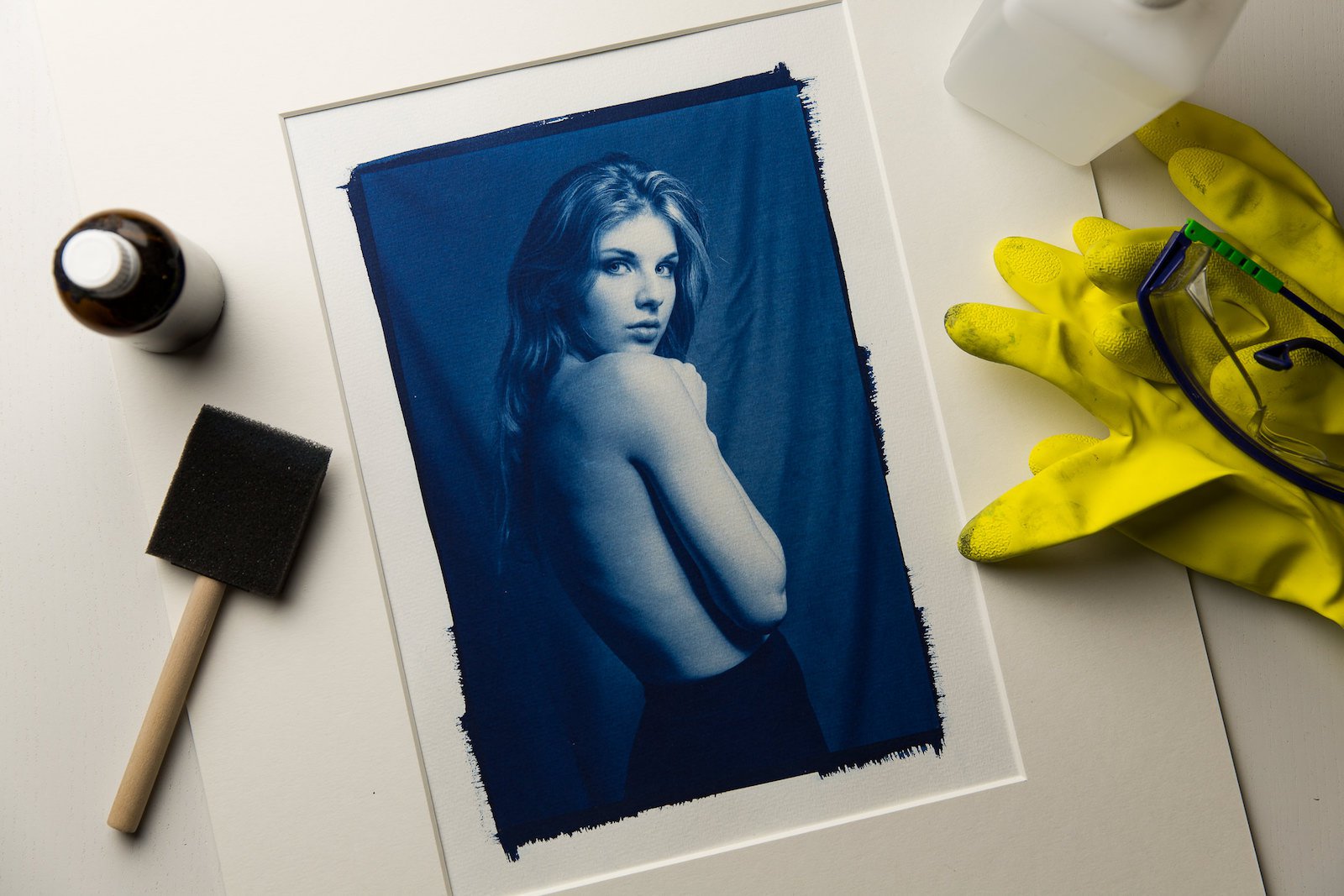
![]()
I entered the world of photography when digital cameras where already on the rise, and as a result, I learned photography on digital. That being said, I am a sucker for anything analog… the sensation of using real organic materials to produce photographs excites me.
While I was exploring alternative processes (Collodion Wetplates and such), I came across the Cyanotype process. Cyanotype is a hand-printing process that was discovered back in 1842—a time when what is now California was still Mexico.
Cyanotype produces a cyan-blue contact print of any sort of negative. Originally used by engineers as a cheap way to produce blueprints (cyan=blue… print… get it?), it was the first female photographer Anna Atkins who adapted this process to create photograms of plants.
Every Cyanotype is unique. Much like in a painting, the brush stroke you use to apply the photosensitive solution to a paper has a huge impact on how the image will look after processing.
![]()
After the photosensitive solution has dried, the negative is placed directly on the paper (you know: contact print) and then exposed to UV light like the sun… or in my case a face tanner. Though the usual color of a Cyanotype is blue, using toning and various chemicals—such as ammonia, hydrogen peroxide, and other scientific sounding fluids—the print can be influenced in (blue) color intensity, tone, and overall contrast after UV exposure.
Your options with Cyanotype are nearly limitless.
![]()
![]()
![]()
Since Cyanotype creates a 1:1 contact print of a negative, photographers have used the process for years to create art prints of large format photos.
Nowadays, large format film has become quite exotic and expensive to say the least, but the more common 35mm and medium format films are too small to get a usable print. So I thought, why not print a large negative of a digital photo on my Epson R3000 and try to create a Cyanotype print?
… and that’s exactly what I did.
You can see the whole Cyanotype process and its result in this short video (German audio with English subtitles):
Disclaimer: If you are interested in the process, please attend a workshop or a personal tutoring. Some of the chemicals used in the process can be quite hazardous when used incorrectly.
About the author: Andreas von Grabowiecki is a photographer based in Frankfurt, Germany. He specialized in travel photography, landscapes and abstract images. You can find more of his work on his website, Facebook, Instagram, and YouTube.

